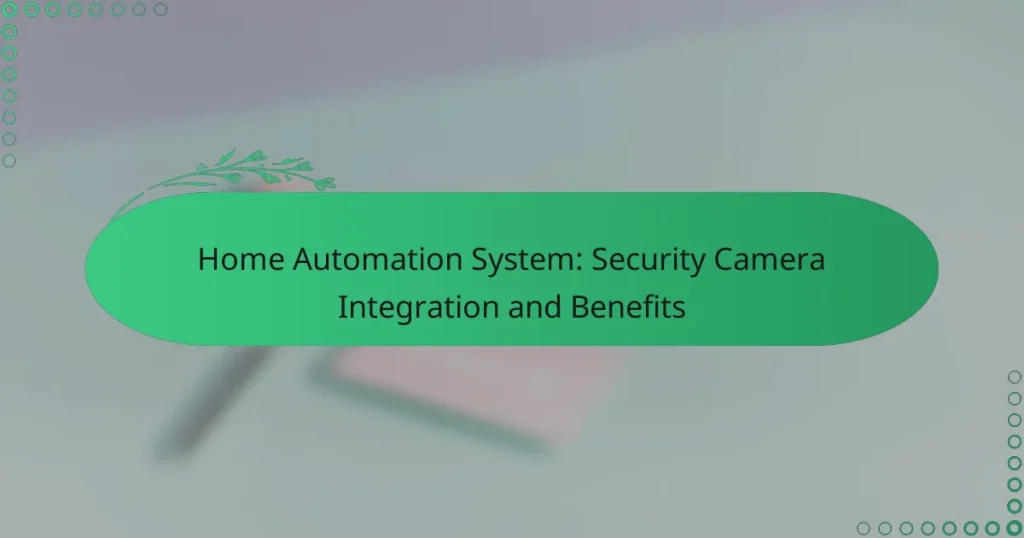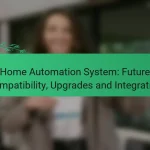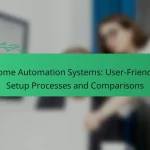Integrating security cameras into a home automation system significantly enhances your ability to monitor and protect your property. These cameras offer real-time surveillance and remote access, seamlessly working with other smart devices to create a comprehensive security solution. With features like motion detection and cloud storage, homeowners can enjoy peace of mind while benefiting from the convenience of automation.
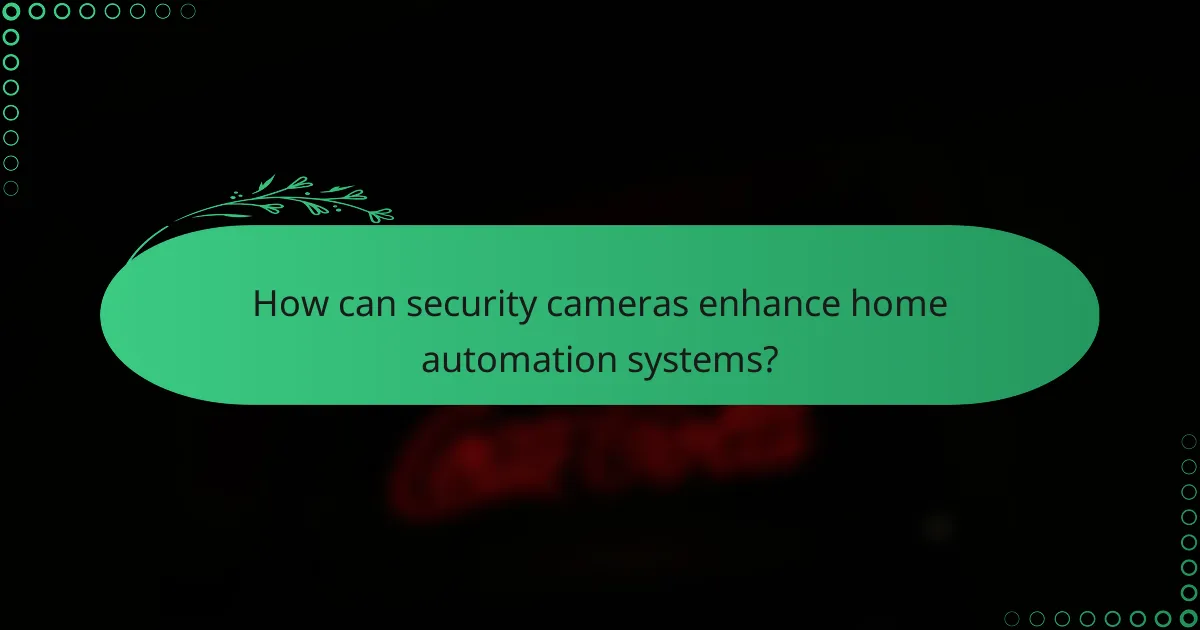
How can security cameras enhance home automation systems?
Security cameras significantly enhance home automation systems by providing real-time surveillance and remote monitoring capabilities. They integrate seamlessly with other smart devices, allowing homeowners to maintain a secure environment while enjoying the convenience of automation.
Real-time monitoring
Real-time monitoring through security cameras allows homeowners to observe their property continuously. This feature is crucial for detecting unusual activities as they happen, enabling prompt responses to potential threats.
Many modern cameras offer high-definition video feeds, often accessible via mobile devices. This ensures that users can keep an eye on their homes from anywhere, whether they are at work or on vacation.
Remote access via mobile apps
Remote access via mobile apps is a key benefit of integrating security cameras into home automation systems. Users can view live feeds, recorded footage, and receive alerts directly on their smartphones.
Most security camera systems support both iOS and Android platforms, making it easy for homeowners to stay connected. This accessibility allows for quick decision-making in case of suspicious activity.
Integration with smart home devices
Security cameras can be integrated with various smart home devices, enhancing overall functionality. For example, cameras can work alongside smart locks and alarms to create a comprehensive security network.
This integration allows for automated actions, such as locking doors when a camera detects unusual movement, providing an additional layer of security without requiring manual intervention.
Automated alerts and notifications
Automated alerts and notifications are essential features of modern security cameras. Homeowners can receive instant alerts via text or app notifications when motion is detected or when the camera identifies specific events.
These alerts can be customized based on sensitivity settings, allowing users to minimize false alarms while ensuring they are informed of genuine security concerns.
Improved home security
Integrating security cameras into home automation systems leads to improved overall home security. The presence of visible cameras can deter potential intruders, reducing the likelihood of break-ins.
Moreover, having a comprehensive surveillance system allows homeowners to monitor their property effectively, providing peace of mind and a sense of safety for families. Regularly reviewing camera footage can also help identify security gaps and inform future enhancements to the system.
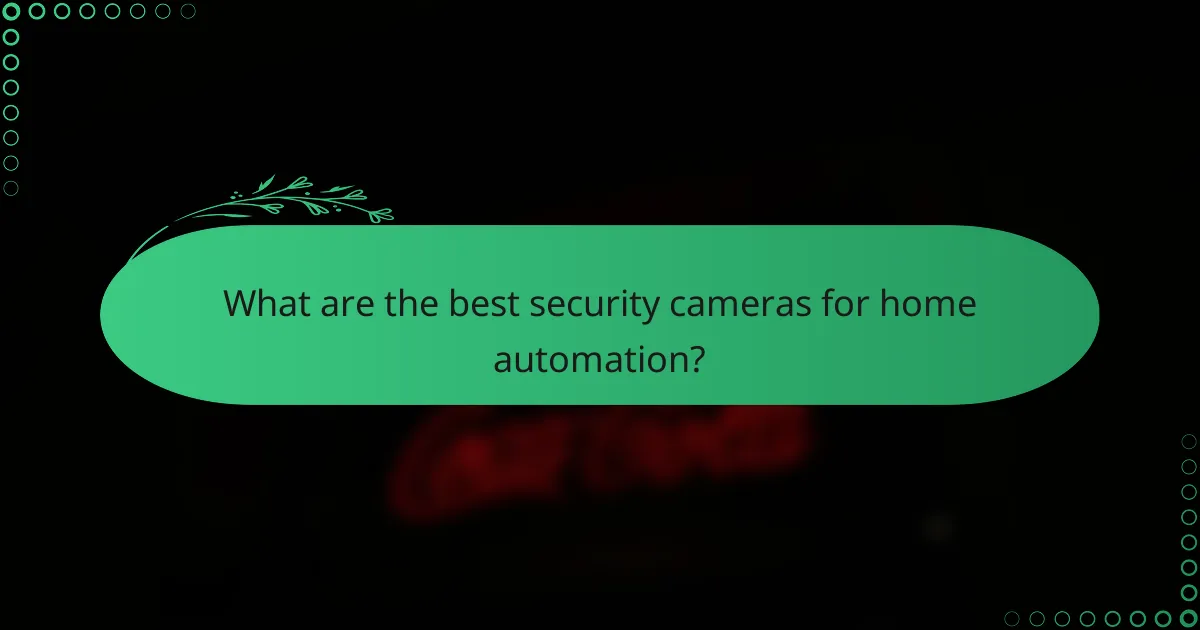
What are the best security cameras for home automation?
The best security cameras for home automation seamlessly integrate with smart home systems, offering features like remote access, motion detection, and cloud storage. Popular options include models from Ring, Arlo, Google Nest, and Wyze, each providing unique benefits tailored to different needs and budgets.
Ring Stick Up Cam
The Ring Stick Up Cam is a versatile security camera that can be used indoors or outdoors. It offers 1080p HD video, two-way audio, and customizable motion detection alerts, making it suitable for various home automation setups.
One of its key features is the ability to integrate with other Ring devices, allowing for a comprehensive security system. Additionally, it supports both battery and wired power options, providing flexibility in installation.
Arlo Pro 4
The Arlo Pro 4 is known for its high-quality 2K video resolution and advanced night vision capabilities. This camera is wire-free, making it easy to install in various locations around your home.
It includes features like a built-in spotlight and a siren for added security. The Arlo app allows for seamless integration with other smart home devices, enabling users to monitor their property from anywhere.
Google Nest Cam
The Google Nest Cam offers a sleek design and robust features, including 1080p HD video and intelligent alerts that differentiate between people, animals, and vehicles. This camera is particularly effective for those already using Google Home products.
With a subscription to Nest Aware, users gain access to additional features like cloud storage and advanced activity zones. Its integration with Google Assistant allows for voice control and easy access to camera feeds.
Wyze Cam v3
The Wyze Cam v3 is an affordable option that does not compromise on quality, offering 1080p video and color night vision. It is ideal for budget-conscious consumers looking to enhance their home security without breaking the bank.
This camera supports local storage via a microSD card and can be integrated with other Wyze products for a complete home automation experience. Its user-friendly app makes setup and monitoring straightforward for all users.
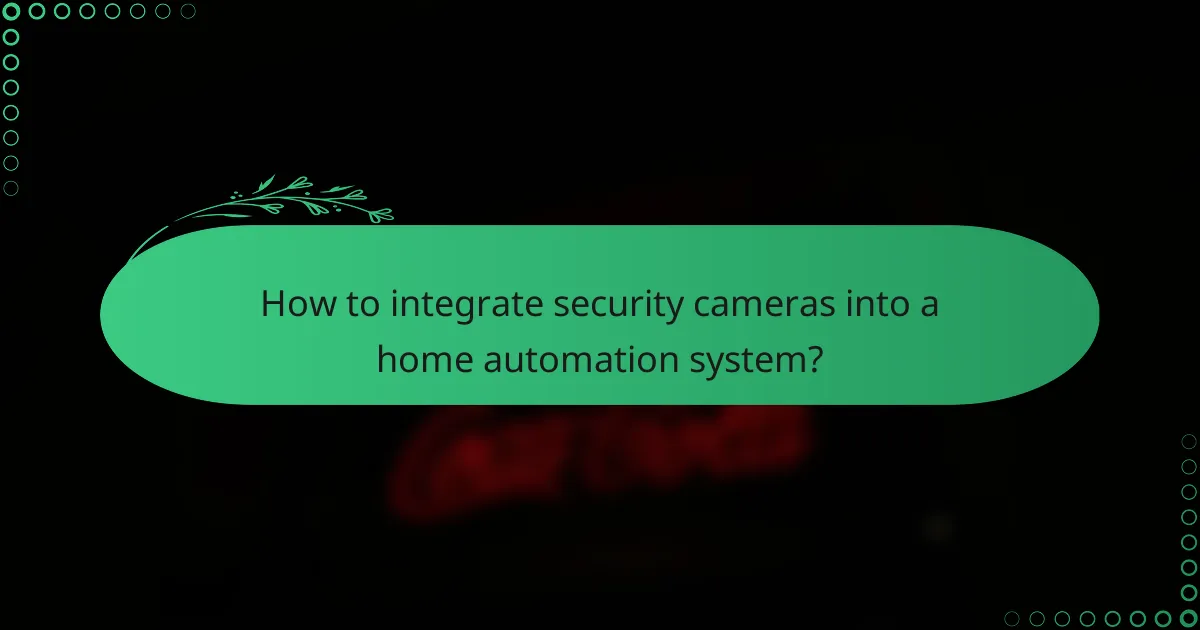
How to integrate security cameras into a home automation system?
Integrating security cameras into a home automation system enhances surveillance and control over your property. This process typically involves selecting compatible devices, setting up a central hub, connecting the cameras to Wi-Fi, and configuring automation rules for optimal performance.
Choosing compatible devices
When selecting security cameras for your home automation system, ensure they are compatible with your existing devices and platforms. Look for cameras that support popular protocols like Z-Wave, Zigbee, or Wi-Fi, and check for compatibility with your home automation hub.
Consider factors such as video resolution, night vision capabilities, and field of view. Brands like Arlo, Ring, and Nest offer a range of options that integrate well with various home automation systems.
Setting up a central hub
A central hub acts as the brain of your home automation system, allowing different devices to communicate with each other. Choose a hub that supports a wide range of devices and protocols to ensure seamless integration.
Popular hubs include SmartThings, Hubitat, and Home Assistant. Follow the manufacturer’s instructions to set up the hub, ensuring it is connected to your home network and properly configured to recognize your security cameras.
Connecting cameras to Wi-Fi
To connect your security cameras to Wi-Fi, follow the specific instructions provided by the manufacturer. Typically, this involves using a mobile app to scan for available networks and entering your Wi-Fi credentials.
Ensure your Wi-Fi signal is strong in the areas where cameras are installed to avoid connectivity issues. If necessary, consider using Wi-Fi extenders to boost coverage in larger homes.
Configuring automation rules
Once your cameras are connected, configure automation rules to enhance security and convenience. For example, you can set rules to receive alerts when motion is detected or to automatically record video during specific times.
Utilize the automation features of your central hub to create scenarios, such as turning on outdoor lights when the camera detects movement. Regularly review and adjust these rules based on your security needs and preferences.
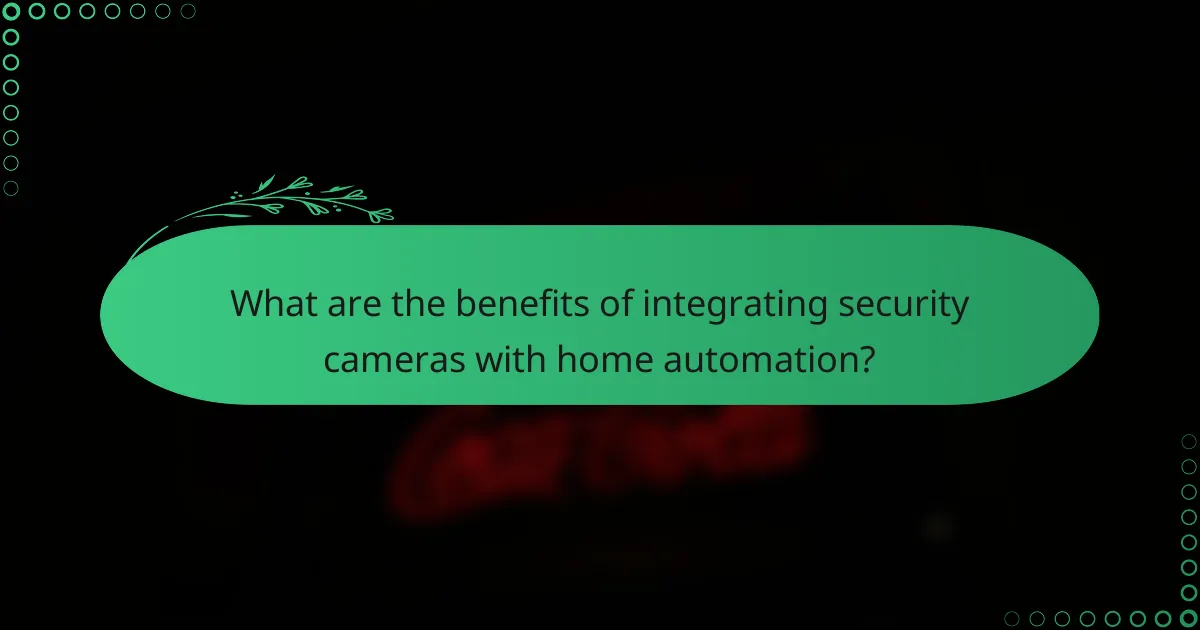
What are the benefits of integrating security cameras with home automation?
Integrating security cameras with home automation systems enhances both safety and convenience for homeowners. This synergy allows for real-time monitoring, remote access, and improved security measures that can deter potential threats.
Increased safety and security
The integration of security cameras with home automation significantly boosts safety and security. Homeowners can monitor their property in real-time through mobile devices, receiving instant alerts for any suspicious activity.
Additionally, many modern systems offer features like motion detection and night vision, which enhance surveillance capabilities. This proactive approach helps to deter intruders and provides peace of mind, knowing that your home is under constant watch.
Convenience and ease of use
Home automation systems streamline the management of security cameras, making them easy to use. Users can control their cameras through a single app, allowing for quick adjustments and monitoring from anywhere.
Features such as automated recording schedules and integration with smart home devices, like lights and alarms, further enhance convenience. For example, lights can be programmed to turn on when motion is detected, creating the illusion of occupancy and increasing safety.
Cost savings on insurance
Integrating security cameras into a home automation system can lead to significant cost savings on homeowners insurance. Many insurance providers offer discounts for homes equipped with advanced security measures, including surveillance cameras.
These savings can range from 5% to 20% off premiums, depending on the insurer and the level of security implemented. Homeowners should check with their insurance company to understand the specific requirements for qualifying for these discounts.
